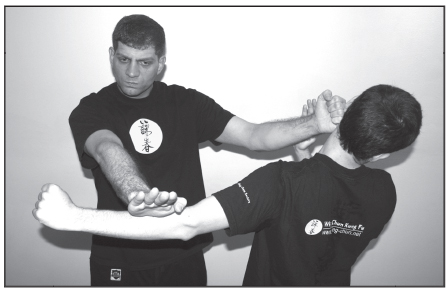You may have heard that Wing Chun practitioners work with a center-line principle. In fact, Wing Chun implements a theory not only of center-lines, but also central-lines. These lines will play a crucial role in everything you do within your training. The center-line is the line directly down the center of one’s body. The central-line is the line from the center of your body to your opponent. With linear attacks, your center-line is away from your opponent while your central-line faces him or her. When dealing with circular attacks, the center-and central-lines merge.
From a defensive perspective, the center-line must be guarded at all times. All of the vital organs are located near the center of the body; therefore, one should not expose one’s center to an opponent. From an offensive perspective, one can generate more power from the center of one’s body. When you punch out from your center, you can get your whole body and hips into the punch. If you just throw an arm punch from the side of your body without using your center, you are missing a whole realm of power. Understand these lines, angles, and principles and you will understand the root of Wing Chun kung fu.
The center-line is the line running directly down the center of your body. The entire center-line projects outwardly
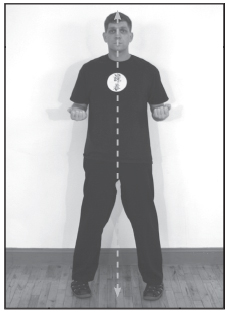
When facing your opponent, keep your center away from your opponent for protection.
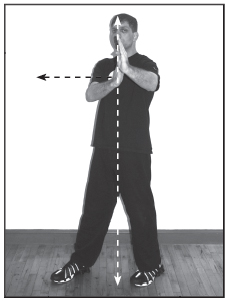
As your center-line is angled away from your opponent, your central line is the drawn from your angled center to your opponent. Here you see you and your partner’s center-lines angled away from each other while your hands are lined up extending out of the central line.
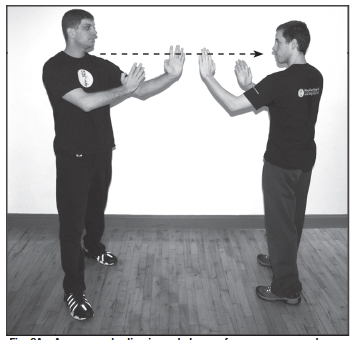
During linear attacks, your center-line is away from your opponent while your central-line faces his/her center. As later discussed, it is the footwork that gets you to the side and the angle of your punch that makes this deflection possible, not a forceful or banging movement.
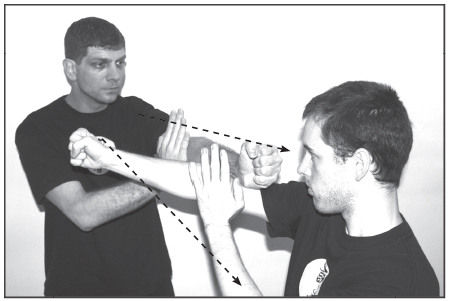
When dealing with circular attacks (hook punch), the center- and central-lines merge. This angle shows the central-line facing the opponent’s center.
